by Ben Reade.
Part 1 by Ben Reade
Overview
Our recipe for elder vinegar. Begun from a elderflower wine and undergoing a second fermentation on the berries, this vinegar has good aging potential. The fermentation makes it safe from any potential cyanide, and the acidity brings out the floral, fruity notes over the muddy, watery ones. It is delicious.
So, sometime in the spring of 2010 while I was living in Italy I got into making elderflower syrups – it’s something I’ve grown up around in Scotland, a favourite taste of summertime. During my childhood, around 50% of the bottles would start to ferment (some would explode) and when a good recipe was stumbled on by chance (my mum would never weigh anything), a delicious sparkling wine would magically appear. Now, elderflower champagne, as it’s often know, is as old as the hills. It’s delicious, always gets consumed faster than expected, and everyone always wishes they had made more.
A good recipe for a traditional elderflower syrup is:
80 heads of elder flowers, removed from green stems (harvested after some days of sunshine)
2.5 L water
3 kg sugar
100 g citric acid
Zest and juice of 6 (*ahem*, nordic) lemons
Boil sugar and water, pour over the rest, cover and leave for 24 h. Strain.
If you want to bottle it to keep as syrup, you can pasteurize it at 63 °C for 30 minutes or 72 °C for 15 seconds before closing in clean bottles. However, you may instead like to take your syrup on a longer journey. For this the options are endless, so I will not give you super precise instructions – also because when I made the best version of this, I was not in ‘lab mode’ and have no written record of any recipe, and it was done by feel. Unrepeatable – as the very best things so often are.
I’d like to tell you how to turn this into floral vinegar with a gentle acidity and some sweetness, suitable for diverse applications from desserts to sauces and cocktails. This is somewhat similar to a ‘shrub’, but I have never tasted a shrub this good. The fact that it goes through two layers of fermentation, alcoholic with the flowers and acetic with the berries, leads to completely new levels of complexity.
To make your syrup into a wine (the first stage in vinegar-making), dilute it down to around 20% sugar (more to have it sweeter/stronger, less to have it more dry/weaker – dependent on the yeast strains being used), give it a shake to dissolve some oxygen and pitch (add) some yeast. Put an airlock on this and leave it somewhere cool to ferment and forget about it for a while. For more information on alcoholic fermentation, check here.
So in 2010 after tasting my over-sweet, but quite alcoholic and rather nice floral wine, I decided I wanted to make vinegar that had serious aging potential. I’ve been quite obsessed with vinegar for quite some time, so there are a few posts written about it around on this blog. For simple European vinegars see here, processing methods here and balsamic style vinegars, here.
Back to my elder vinegar, and how to get it older. The ‘wine’, as it stands, has a very simple mixture (sugar, water, acids, floral and lemon flavours and alcohol). In order to give the vinegar aging potential it required some structure, tannins and antioxidants. Of course, elderberries are rich in all these things, so it made sense to give the flower wine structure using fruits of the same plant.
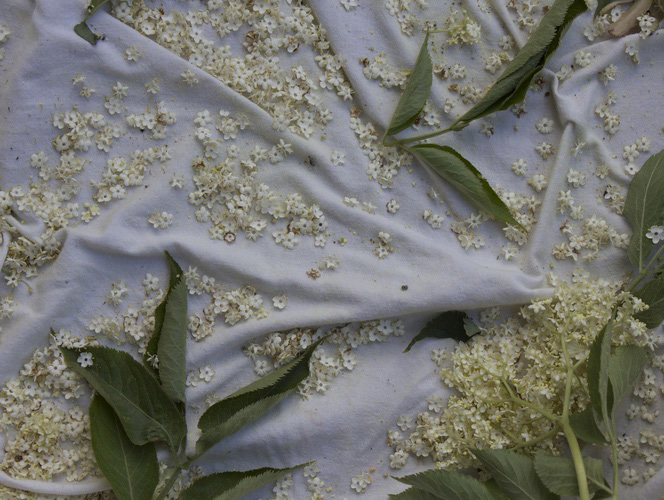
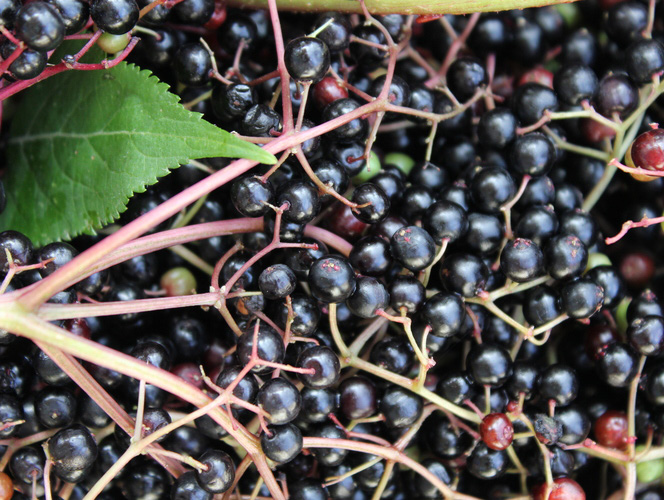
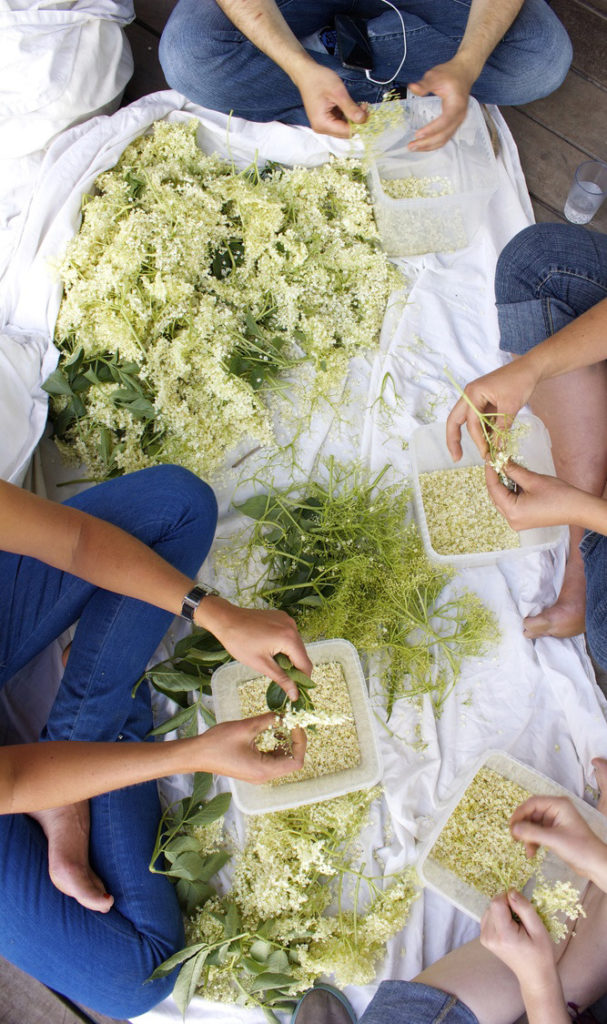
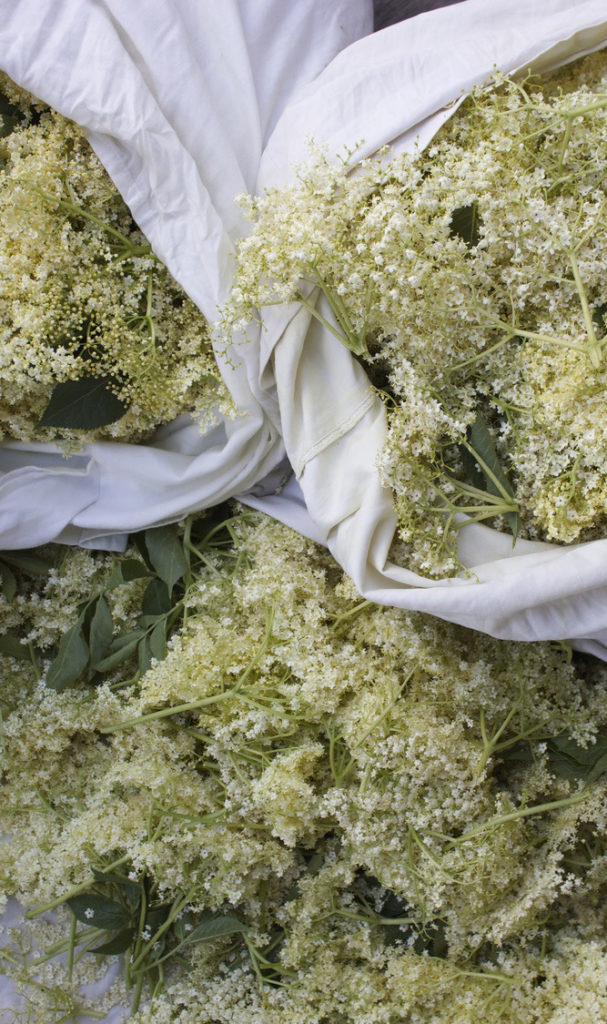
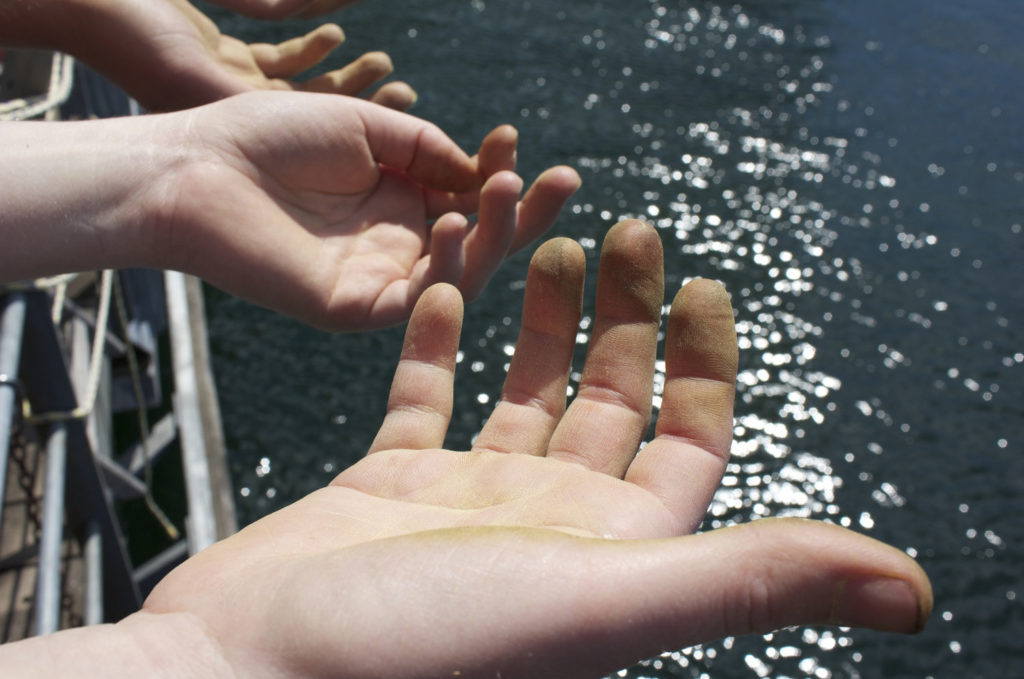
So, hold the wine until the elder berries are ripe and deep purple. Then pick loads and loads of the biggest, juiciest berries, and fill up a wide mouthed jar with them. This works well with elderberries, but also with blackberries and other colour-rich berries that will give aging potential to your vinegar. Cover the berries with your elderflower wine, and add about a quarter of this quantity again of live vinegar.
It’s important to use a wide-mouthed jar to increase oxygen circulation, and don’t use a lid but a thin piece of muslin or similar. Keep your slowly processing vinegar in a warm and dark place (between 30 – 40 °C is great). Leave it for 1 month like this. After that time, strain to remove the berries, return to the jar and put back in your warm and dark place for another two months.
Don’t worry if you remove the vinegar mother while straining. Although the mother is attached to lots of superstition, it is a recognizable manifestation of the acetic acid bacteria, but the bacteria are plentiful in the liquid, and that’s quite enough! For more information on the formation of mothers, and how that works, have a look at this excellent post on the acidic beverage kombucha.
There is one problem, and that is that elderberries can be toxic. In fact the whole elder plant is pretty full of a family of molecules called cyanogenic glycosides – which are particularly potent in the green parts and the seeds. For more informations on this, you can refer to Justine’s post on hygrogen cyanide. This is why it is crucial to separate the green parts from the flowers when making the syrup.
But then we get to the berries. If one drinks a freshly made elderberry juice, and we tried it, chances are that one is going to feel bad for a little while – to quote René,
reflecting on a spoonful of raw elderberry juice, “you know the feeling of car sickness, it’s like that but times 100, it’s like hitting a brick wall of nausea, with immediate effect” – and we are now older and wiser. So don’t try raw elderberry juice.
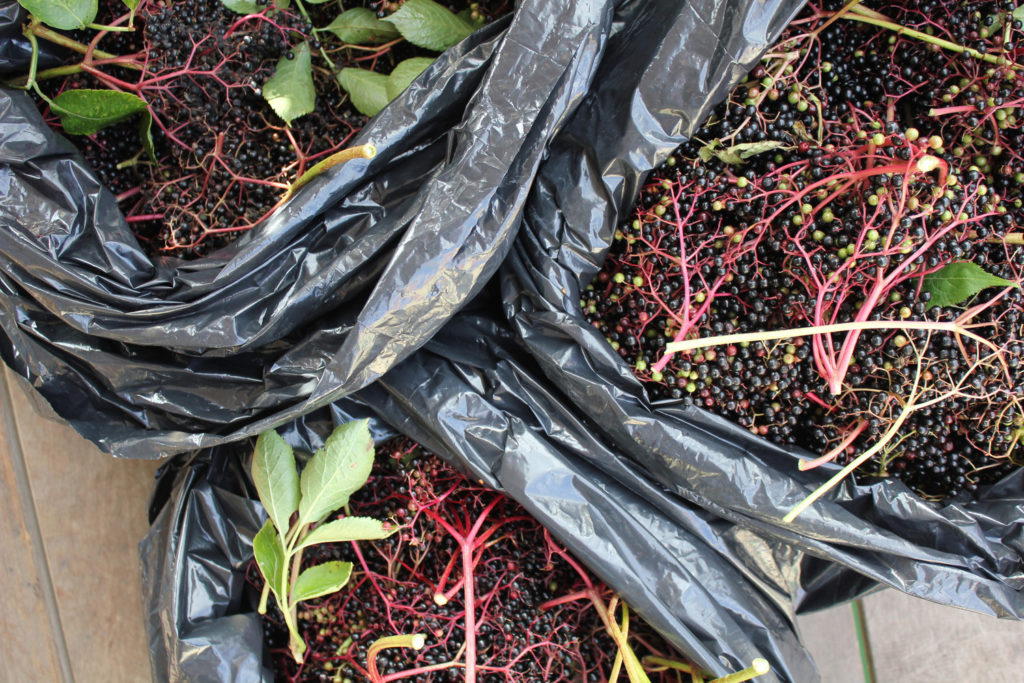
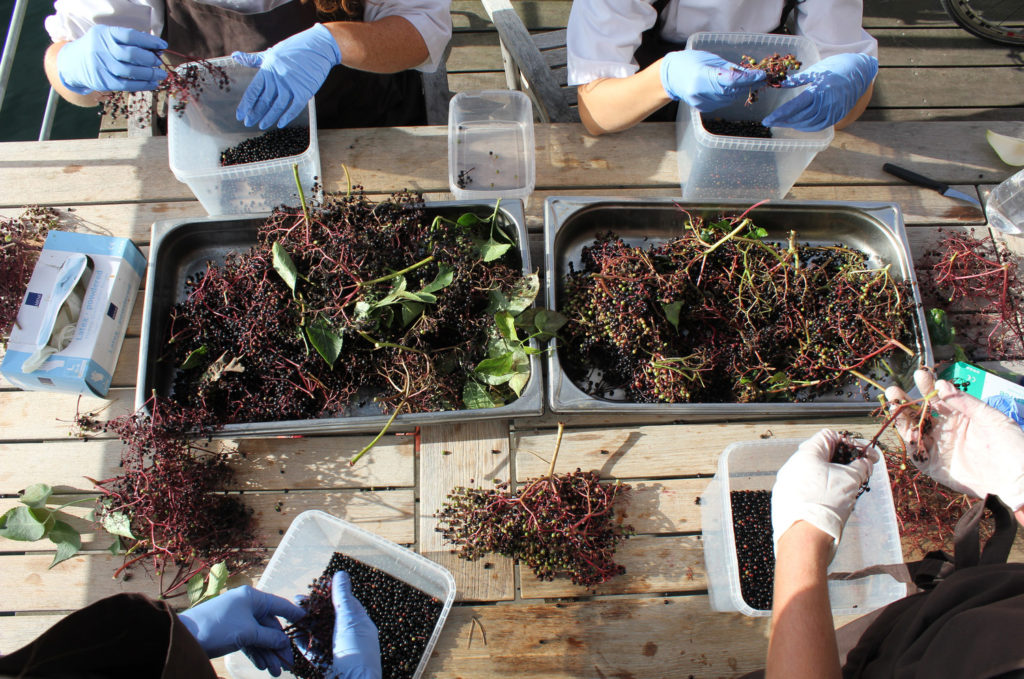
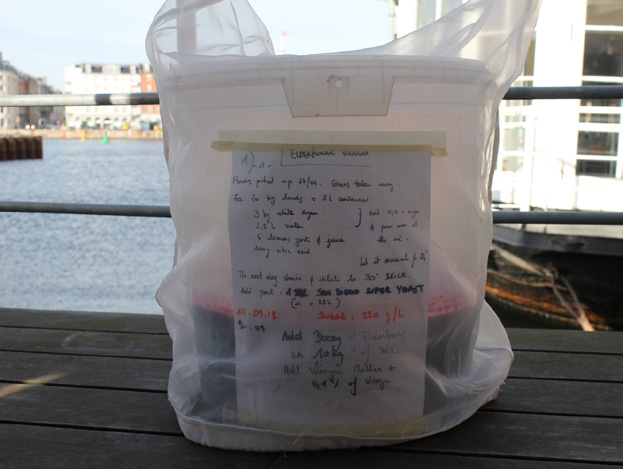
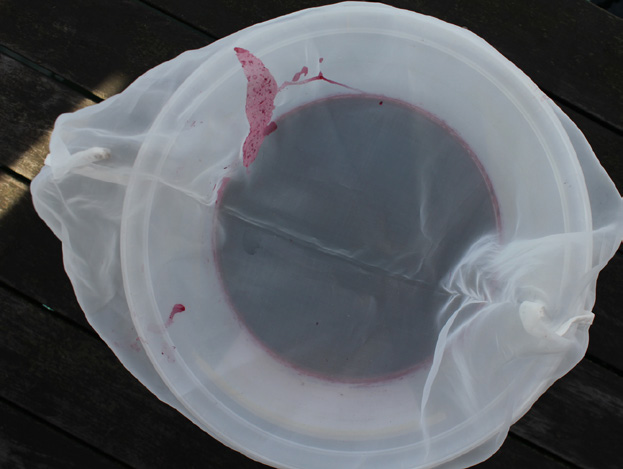
So I wanted to find out more about cyanogenic glycosides, and knew that people who had tried the berries had felt very sick, but that people who tried my vinegar had a massive smile.
Luckily we have Justine here at the lab, and she’s great at the chemistry side of things, so she’ll fill you in on that.
And yeah, I know Elderflower season is over, but we’ll repost this at the start of next year’s season!
Part 2: Is this vinegar safe?
by Justine de Valicourt
here is a long tradition in many areas of the world, particularly Africa and South Africa, of eating cassava. Cassava has one of the highest concentrations of cyanogenic glycosides and it is often the cause of massive food poisoning in regions with drought or famine. Cassava products are harmful mostly in these moments because people are consuming it immediately, before it is properly processed. This root should always be cooked after being previously soaked and fermented. The fermentation lowers the pH and therefore also the potential release of cyanide from the glycosides (White, 1998).
Glycosides are molecules that include a sugar and another functional group. In the case of cyanogenic glycosides, the functional group is partly composed of a molecule of cyanide. They are concentrated in vacuoles (small bubbles distributed throughout the cytoplasm of the cell). When the cell is harmed, the bubbles break and the cyanogenic glycosides are released into the cytoplasm, where they can react with enzymes that will break the bond between the sugar molecule and the functional group. The free cyanide then begins its disturbance of cellular respiration.
The cyanogenic glycosides in elderberries are different from the ones in cassava, but a study from Eugeniusz Pogorzelski (1982) also showed that fermentation lowered the cyanide potential of elderberries. Enzymes are proteins, and acidity does the same to them as to fish in ceviche or as heat does to an egg: it denatures them. Enzyme then become inefficient at breaking the bond between the sugar and the cyanide and the cyanide stays harmless. So, the low pH of the vinegar might be enough to lower the cyanogenic potential of the berries. Could explain the smile…
Also, as hydrogen cyanide evaporates at 26°C, a big part of the free cyanide should be released in the second fermentation that occurs around 30-40°C.
Finally, and importantly, nobody ever drinks an entire glass of vinegar.
So the vinegar is safe of cyanide. Ours is in its second fermentation. It started to oxidise, with that distinctive sherry taste, and a scent reminiscent of the floral notes on a good sweet Moscato di Asti. Soon we will be smiling.
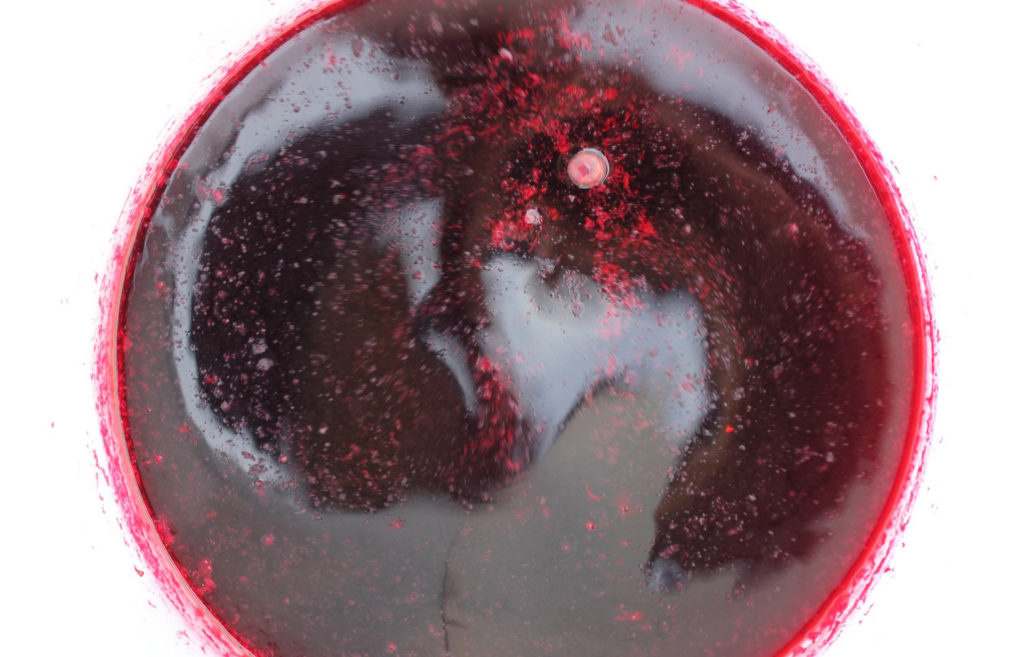
References
WHITE, Wanda LB, ARIAS-GARZON, Diana I., MCMAHON, Jennifer M., et al.Cyanogenesis in Cassava The Role of Hydroxynitrile Lyase in Root Cyanide Production. Plant Physiology, 1998, vol. 116, no 4, p. 1219-1225.
POGORZELSKI, Eugeniusz. Formation of cyanide as a product of decomposition of cyanogenic glucosides in the treatment of elderberry fruit (Sambucus nigra). Journal of the Science of Food and Agriculture, 1982, vol. 33, no 5, p. 496-498.
